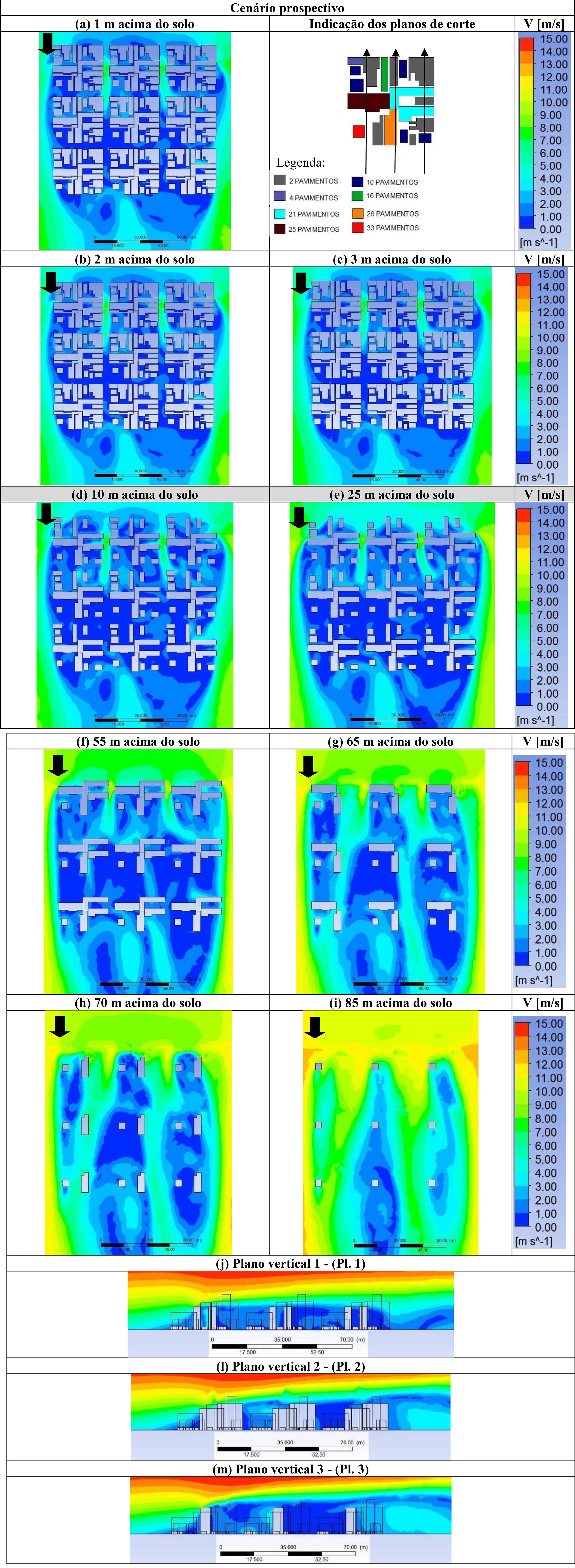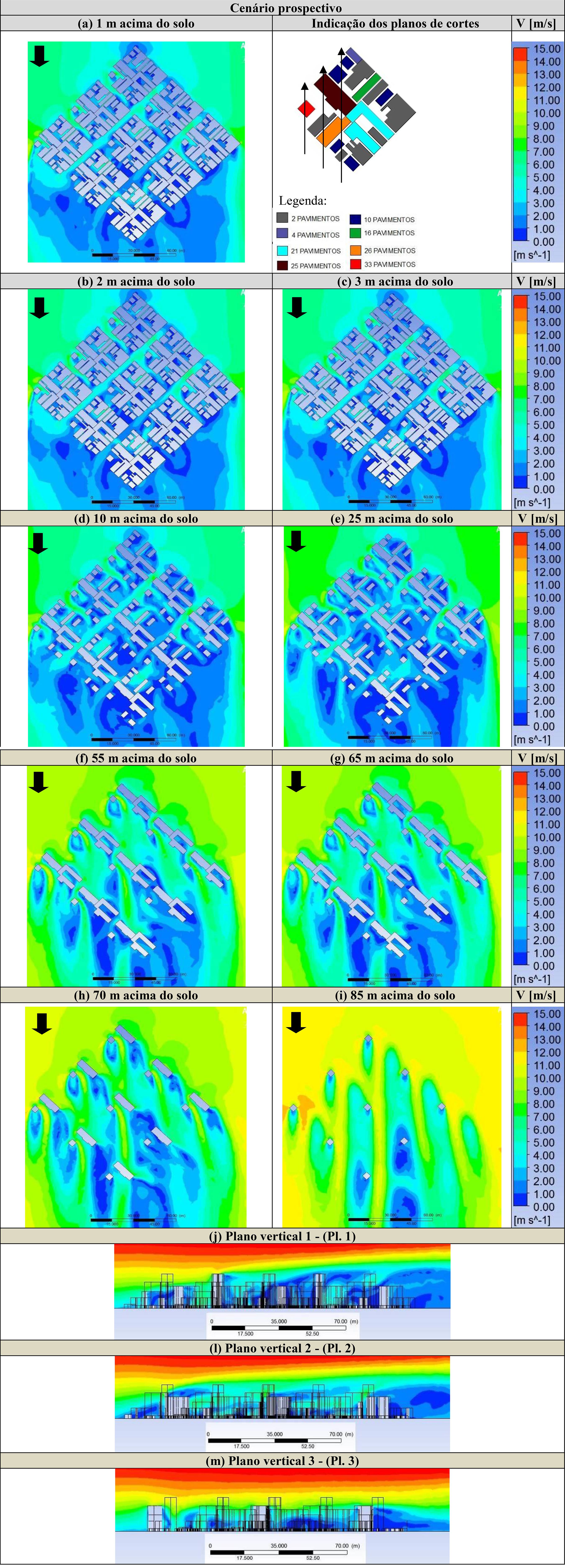|
Entrada
|
Wieringa (1992)WIERINGA, J. Updating the Davenport Roughness Classification. Journal of Wind Engineering and Industrial Aerodynamics. v. 61, p. 357-368, 1992.; Richards e Roxey (1993)RICHARDS, P. J.; ROXEY, R. P. Appropriate Boundary Conditions for Computational Wind Engineering Model Using the k-ε Turbulence Model. Journal of Wind Engineering and Industrial Aerodynamics, v. 46/47, p. 145-153, 1993.; Franke et al. (2007)FRANKE, J. et al.
Best Practice Guideline for the CFD Simulation of Flows in the Urban Environment. COST Office Brussels, 2007. COST 732: Quality Assurance and Improvement of Microscale Meteorological Models.; Zhang (2009)ZHANG, X. CFD Simulation of Neutral ABL flows. Risø National Laboratory for Sustainable Energy. Technical University of Denmark. Roskilde, 2009.; Blocken, Janssen e van Hooff (2012)BLOCKEN, B.; JANSSEN, W. D.; VAN HOOFF, T. CFD Simulation for Pedestrian Wind Comfort and Wind Safety in Urban Areas: general decision framework and case study for the Eindhoven University campus. Environment Modelling and Software, 2012.; e Ramponi e Blocken (2012)RAMPONI, R.; BLOCKEN, B. CFD Simulation of Cross-Ventilation Flow for Different Isolated Building Configurations: validation with wind tunnel measurements and analysis of physical and numerical diffusion effects. Journal of Wind Engineering and Industrial Aerodynamics, v. 104, n. 106, p. 408-418, 2012.. |
a)Condição de entrada (inlet) com inserção do perfil de entrada da velocidade média vertical do vento [U] e equação de cálculo da velocidade de atrito [u*].
b) Intensidade de turbulência de 5%.
c) Comprimento de rugosidade aerodinâmica de 2 m (edifícios altos).
d) Velocidade média do vento de 3 m/s.  ; ;  
|
|
Lateral
|
Cóstola e Alucci (2011)CÓSTOLA, D.; ALUCCI, M. P. Aplicação de CFD Para o Cálculo de Coeficientes de Pressão Externos nas Aberturas de um Edifício. Ambiente Construído, Porto Alegre, v. 11, n. 1, p. 145-158, jan./mar. 2011.; Franke (2006)FRANKE, J. Recommendations of the COST Action C14 on the use of CFD in Predicting Pedestrian Wind Environment. In: INTERNATIONAL SYMPOSIUM ON COMPUTATIONAL WIND ENGINEERING, 4., Yokohama, 2006. Proceedings... Yokohama, 2006.; e Blocken, Carmeliet e Stathopoulos (2007)BLOCKEN, B.; CARMELIET, J.; STATHOPOULOS, T. CFD Evaluation of the Wind Speed Conditions in Passages Between Buildings-Effect of Wall-Function Roughness Modifications on the Atmospheric Boundary Layer Flow. Journal of Wind Engineering and Industrial Aerodynamics, v. 95, n. 9/11, p. 941-962, 2007.. |
Condição de parede (wall), sem rugosidade (free slip wall). |
|
Topo
|
Blocken, Stathopoulos e Carmeliet (2007)BLOCKEN, B.; CARMELIET, J.; STATHOPOULOS, T. CFD Evaluation of the Wind Speed Conditions in Passages Between Buildings-Effect of Wall-Function Roughness Modifications on the Atmospheric Boundary Layer Flow. Journal of Wind Engineering and Industrial Aerodynamics, v. 95, n. 9/11, p. 941-962, 2007.; Brandão (2009)BRANDÃO, R. S. As Interações Espaciais Urbanas e o Clima. São Paulo, 2009. Tese (Doutorado em Engenharia Civil) - Escola de Engenharia, Universidade de São Paulo, São Paulo, 2009.; Blocken e Persoon (2009); e Cóstola e Alucci (2011)BLOCKEN, B; PERSOON, J. Pedestrian wind Comfort Around a Large Football Stadium in an Urban Environment: CFD simulation, validation and application of the new Dutch wind nuisance standard. Journal of Wind Engineering and Industrial Aerodynamics, v. 95, n. 9/11, p. 941-962, 2009.. |
Condição de parede (wall), sem rugosidade (free slip wall). |
|
Saída
|
Franke et al. (2004)FRANKE, J. et al.
Recommendations on the Use of CFD in Wind Engineering. In: BEEK, J. P. A. J. van (Ed.). INTERNATIONAL CONFERENCE ON URBAN WIND ENGINEERING AND BUILDING AERODYNAMICS: COST C14 - IMPACT OF WIND AND STORM ON CITY LIFE AND BUILT ENVIRONMENT, Rhode, 2004. Proceedings... Rhode, 2004.; Ramponi e Blocken (2012)RAMPONI, R.; BLOCKEN, B. CFD Simulation of Cross-Ventilation Flow for Different Isolated Building Configurations: validation with wind tunnel measurements and analysis of physical and numerical diffusion effects. Journal of Wind Engineering and Industrial Aerodynamics, v. 104, n. 106, p. 408-418, 2012.; e An, Fung e Yim (2013)AN, K.; FUNG, J. C. H.; YIM, S. H. L. Sensitivity of Inflow Boundary Conditions on Downstream Wind and Turbulence Profiles Through Buildings Obstacles Using a CFD Approach. Journal of Wind Engineering and Industrial Aerodynamics, v. 115, 137-149, 2013.. |
Condição de contorno aberta (opening) e pressão estática igual à zero. |
|
Piso
|
Brandão (2009)BRANDÃO, R. S. As Interações Espaciais Urbanas e o Clima. São Paulo, 2009. Tese (Doutorado em Engenharia Civil) - Escola de Engenharia, Universidade de São Paulo, São Paulo, 2009.; e Cóstola e Alucci (2011)CÓSTOLA, D.; ALUCCI, M. P. Aplicação de CFD Para o Cálculo de Coeficientes de Pressão Externos nas Aberturas de um Edifício. Ambiente Construído, Porto Alegre, v. 11, n. 1, p. 145-158, jan./mar. 2011.. |
Condição de parede (wall), no slip wall, com rugosidade (smooth
wall) |
|
Parede (Bloco)
|
Brandão (2009)BRANDÃO, R. S. As Interações Espaciais Urbanas e o Clima. São Paulo, 2009. Tese (Doutorado em Engenharia Civil) - Escola de Engenharia, Universidade de São Paulo, São Paulo, 2009.; e Cóstola e Alucci (2011)CÓSTOLA, D.; ALUCCI, M. P. Aplicação de CFD Para o Cálculo de Coeficientes de Pressão Externos nas Aberturas de um Edifício. Ambiente Construído, Porto Alegre, v. 11, n. 1, p. 145-158, jan./mar. 2011.. |
Condição de parede (wall), no slip wall, com rugosidade (smooth
wall). |

 Fonte:
Fonte: 








 ;
; 





